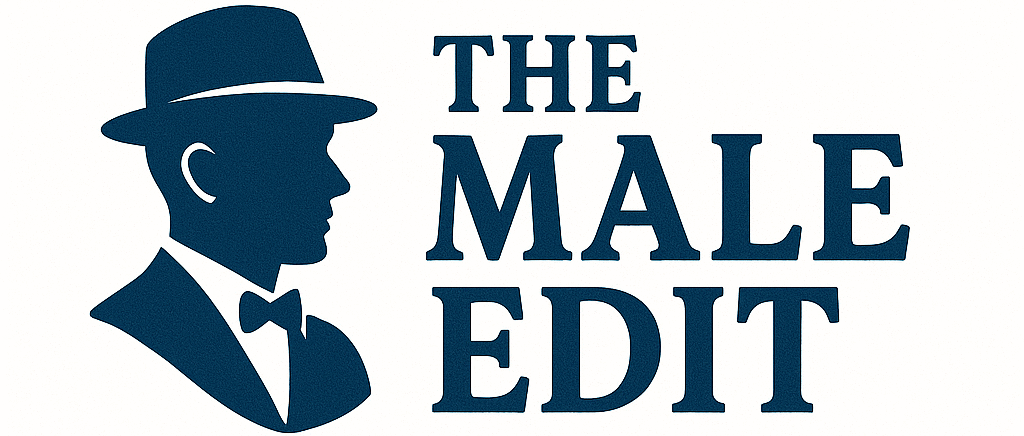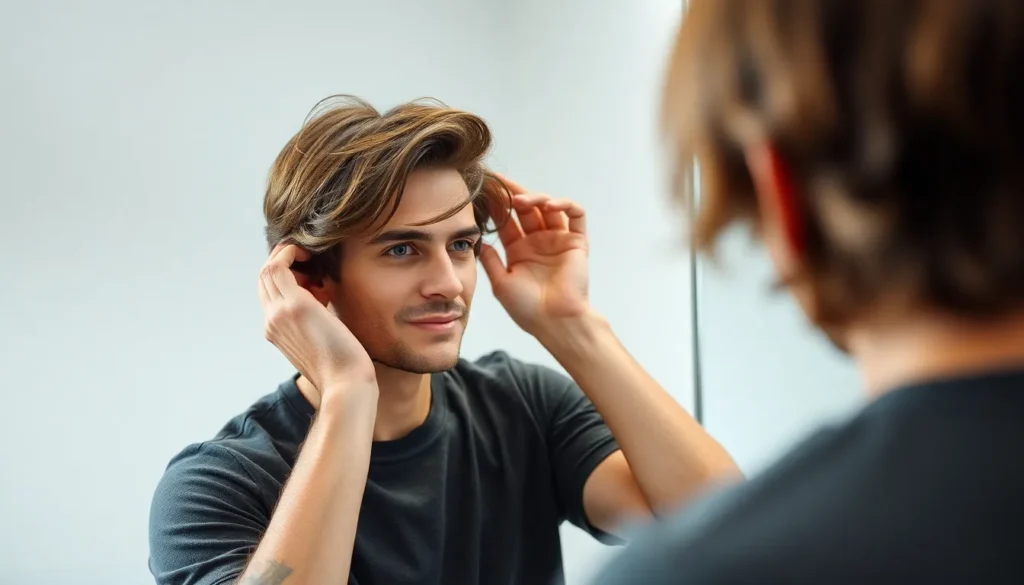We’ve all been there – staring at the mirror and wondering where our once-thick hair disappeared to. Hair loss affects millions of men worldwide and it’s completely natural to want to do something about it. Whether you’re dealing with a receding hairline or thinning crown we understand the frustration and impact it can have on your confidence.
The good news? You don’t have to accept hair loss as inevitable. Science has revealed many proven strategies that can help stimulate hair growth and maintain the hair you still have. From simple lifestyle changes to targeted treatments there are effective answers that actually work when applied consistently.
We’ve compiled the most reliable and science-backed hair growth tips specifically for men. These aren’t miracle cures or overnight answers – they’re practical strategies that address the root causes of hair loss and create optimal conditions for healthy hair growth. Let’s explore how you can take control of your hair health and potentially reverse some of that unwanted thinning.
Maintain a Healthy Diet Rich in Hair Growth Nutrients
We’ve established that external factors play a role in hair health, but what you put inside your body matters just as much. Your hair follicles need exact nutrients to produce strong, healthy strands that resist thinning and breakage.
Include Protein-Rich Foods in Every Meal
Protein forms the foundation of hair structure since hair is made up of 95% keratin protein. We recommend consuming 25-30 grams of protein per meal to support optimal hair growth cycles.
Lean protein sources like chicken breast, turkey, and fish provide complete amino acid profiles that your follicles use to build new hair strands. Eggs contain biotin and sulfur compounds that strengthen hair from the root. Greek yogurt delivers both protein and probiotics that improve nutrient absorption for better hair health.
Plant-based options such as quinoa, lentils, and hemp seeds offer protein along with additional vitamins that support circulation to the scalp. Cottage cheese provides casein protein that releases amino acids slowly throughout the day for sustained hair nourishment.
Add Iron and Zinc Through Lean Meats and Legumes
Iron deficiency affects 25% of men experiencing hair loss, making this mineral crucial for preventing further thinning. We suggest targeting 8-10mg of iron daily through food sources rather than supplements when possible.
Red meat options like lean beef and lamb contain heme iron that absorbs 15-35% more efficiently than plant sources. Organ meats such as liver provide concentrated iron along with B vitamins that support hair follicle function. Poultry including chicken and turkey delivers both iron and zinc in easily digestible forms.
Legume varieties like black beans, chickpeas, and kidney beans offer iron plus fiber that helps your body use nutrients effectively. Pumpkin seeds contain 2.9mg of zinc per ounce, supporting testosterone regulation that affects hair growth patterns.
Incorporate Omega-3 Fatty Acids From Fish and Nuts
Omega-3 fatty acids reduce inflammation around hair follicles and improve scalp circulation for better nutrient delivery. We recommend consuming 1-2 grams of omega-3s daily through whole food sources.
Fatty fish selections like salmon, mackerel, and sardines provide EPA and DHA omega-3s that directly nourish hair follicles. Tuna contains selenium and omega-3s that protect against oxidative stress causing hair damage. Anchovies offer concentrated omega-3s in small servings that easily fit into daily meals.
Nut and seed options including walnuts, flaxseeds, and chia seeds provide ALA omega-3s that convert to usable forms in your body. Avocados contain monounsaturated fats that help absorb fat-soluble vitamins essential for hair growth.
Establish a Consistent Hair Care Routine

Building a proper hair care routine forms the foundation of healthy hair growth. We’ll show you how to create a routine that works specifically for men’s hair needs.
Choose the Right Shampoo for Your Hair Type
Different hair types require different approaches to shampooing for optimal hair growth results. Men with oily hair should look for clarifying shampoos that remove excess sebum without completely stripping the scalp. Those with dry hair benefit from moisturizing formulas containing ingredients like glycerin or natural oils.
Selecting products based on your exact hair characteristics prevents damage that can slow growth. Normal hair types can use gentle, sulfate-free shampoos that clean effectively without harsh chemicals. We recommend checking ingredient lists and avoiding products with alcohol or strong detergents that can irritate the scalp.
Condition Your Hair Regularly to Prevent Breakage
Regular conditioning helps prevent breakage and keeps hair healthy as confirmed by hair care experts. Men often skip this step, but conditioning creates a protective barrier around each hair strand. This barrier reduces friction during styling and protects against environmental damage.
Apply conditioner from mid-length to ends, avoiding the scalp area to prevent buildup. Leave-in conditioners work particularly well for men with longer hair or those experiencing dryness. We suggest using a deep conditioning treatment once weekly to maintain hair strength and elasticity.
Avoid Over-Washing That Strips Natural Oils
Over-washing strips hair of its natural oils, leading to dryness and potential breakage according to dermatological research. Most men only need to shampoo every other day or even less frequently depending on their hair type. Daily washing removes sebum that naturally protects and nourishes hair follicles.
Sebum production varies among individuals, so we recommend adjusting washing frequency based on how your scalp feels. Men with very oily scalps might need daily cleansing, while those with dry or normal hair can extend to every 2-3 days. Listen to your hair’s needs and modify your routine accordingly for optimal growth conditions.
Massage Your Scalp to Stimulate Blood Flow
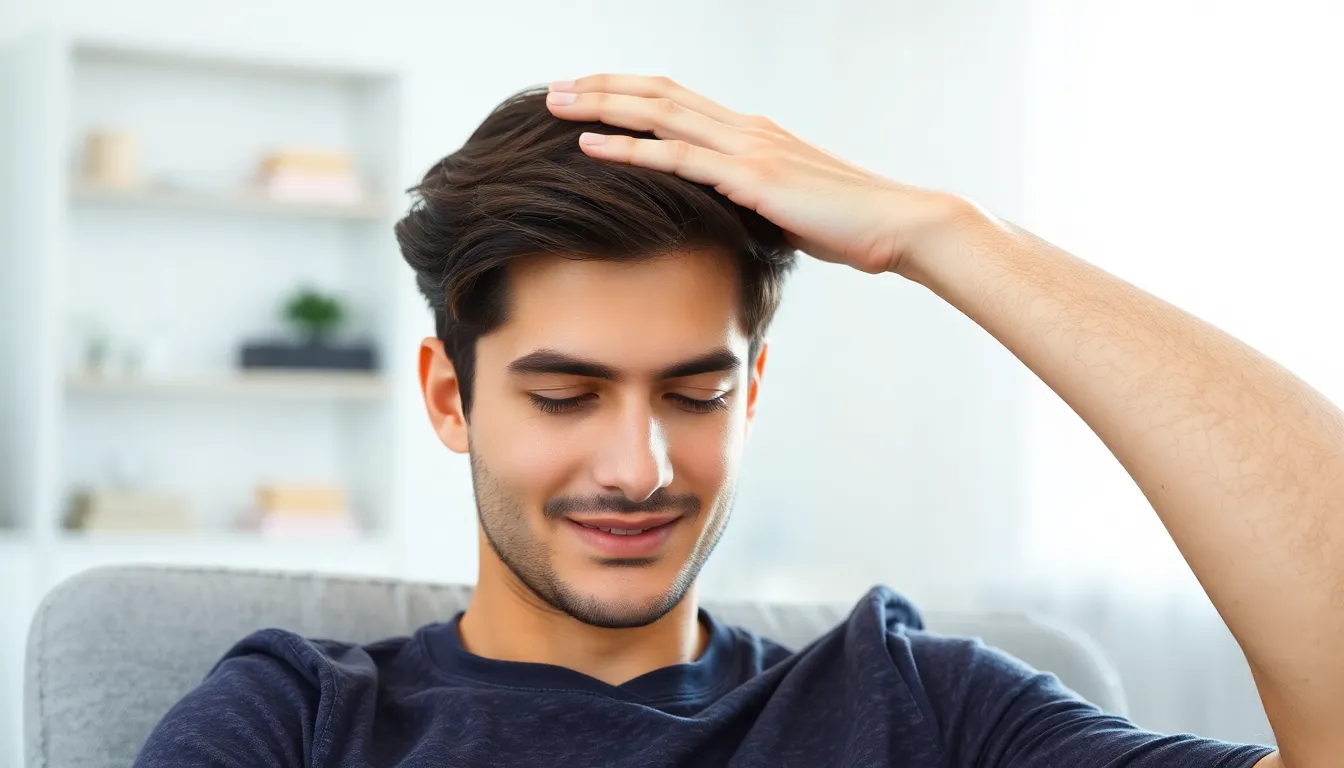
One of the most accessible and effective ways to promote hair growth involves stimulating blood circulation in your scalp. Research demonstrates that regular scalp massage can significantly improve hair thickness and growth.
Use Circular Motions With Your Fingertips
Circular motions with your fingertips create the most effective technique for scalp massage. Apply gentle pressure using the pads of your fingers rather than your nails to avoid irritating the scalp. Start at your hairline and work your way back toward the crown of your head in small circular movements. Focus on areas where you’ve noticed thinning or hair loss, as these regions often benefit most from increased blood flow. Move systematically across your entire scalp to ensure even stimulation of all hair follicles.
Try Essential Oils Like Rosemary or Peppermint
Essential oils can enhance the effectiveness of your scalp massage routine by improving circulation even further. Rosemary oil has shown promising results in clinical studies for promoting hair growth. Peppermint oil creates a cooling sensation that increases blood flow to the scalp. Mix a few drops of your chosen essential oil with a carrier oil like jojoba or coconut oil before application. Never apply essential oils directly to your scalp without diluting them first, as this can cause irritation.
Spend 5-10 Minutes Daily on Scalp Massage
Daily scalp massage for 5-10 minutes provides optimal results for hair growth stimulation. A small study revealed that men who massaged their scalp for just four minutes daily experienced thicker hair after 24 weeks of consistent practice. Morning sessions work well as part of your daily routine, or you can incorporate massage into your evening wind-down time. Consistency matters more than duration, so we recommend starting with shorter sessions if you’re new to scalp massage. Track your progress by taking photos every few weeks to monitor improvements in hair thickness and growth.
Manage Stress Levels to Prevent Hair Loss

High stress levels can significantly contribute to hair loss by disrupting the natural hair growth cycle and triggering excessive shedding. We can take proactive steps to manage stress and protect our hair health through targeted lifestyle changes.
Practice Regular Exercise and Physical Activity
Regular exercise serves as one of the most effective stress management tools while directly benefiting hair health through improved blood circulation. We recommend incorporating 30 minutes of physical activity into our daily routine to enhance blood flow to the scalp and reduce stress hormones like cortisol.
Cardiovascular exercises such as jogging, cycling, or swimming provide excellent stress relief while promoting overall wellness. Strength training activities like weightlifting or bodyweight exercises can boost confidence and reduce anxiety levels. Team sports including basketball, soccer, or tennis offer social interaction benefits that further combat stress.
Physical activity naturally releases endorphins that counteract stress hormones and create a positive mood. We should aim for activities we genuinely enjoy to ensure consistency and long term adherence to our exercise routine.
Try Meditation or Deep Breathing Techniques
Meditation and deep breathing techniques offer powerful stress reduction benefits that directly impact hair health by lowering cortisol levels. We can start with just 5 to 10 minutes of daily meditation to experience noticeable stress relief and improved mental clarity.
Simple breathing exercises include the 4-7-8 technique where we inhale for 4 counts, hold for 7, and exhale for 8. Progressive muscle relaxation involves tensing and releasing different muscle groups to reduce physical stress. Mindfulness meditation focuses on present moment awareness to quiet racing thoughts.
Apps like Headspace, Calm, or Insight Timer provide guided meditations specifically designed for stress management. We can practice these techniques during lunch breaks, before bed, or whenever we feel overwhelmed throughout the day.
Get Adequate Sleep of 7-8 Hours Nightly
Adequate sleep plays a crucial role in hair growth as our bodies repair and regenerate hair follicles during rest periods. We need 7 to 8 hours of quality sleep each night to maintain optimal hair health and reduce stress related hair loss.
Poor sleep quality disrupts hormone production and increases stress hormones that can trigger hair shedding. We should establish a consistent bedtime routine that includes turning off electronic devices 1 hour before sleep. Creating a cool, dark sleeping environment promotes deeper rest and better hair follicle recovery.
Sleep deprivation affects our body’s ability to manage stress effectively, creating a cycle that can worsen hair loss. We can improve sleep quality by avoiding caffeine after 2 PM, limiting alcohol consumption, and maintaining regular sleep and wake times even on weekends.
Avoid Harsh Chemical Treatments and Heat Styling

Protecting our hair from damage requires steering clear of treatments and styling methods that can weaken hair follicles and impede growth. Chemical processes and excessive heat create lasting damage that often takes months to repair.
Limit Use of Hair Dryers and Straighteners
Heat styling tools can significantly damage our hair shaft and slow down natural growth processes. Hair dryers and straighteners expose our strands to temperatures reaching 400°F, which strips away natural moisture and weakens the protein structure of each hair.
We should reduce our reliance on these tools by allowing hair to air dry whenever possible. Towel drying gently with a microfiber cloth helps remove excess water without causing friction damage. When we must use heat styling tools, applying a heat protectant spray creates a barrier that minimizes direct damage to our hair cuticles.
Setting tools to lower temperatures protects our hair while still achieving desired styling results. Medium heat settings typically provide adequate styling power without the extreme damage caused by maximum temperature settings.
Choose Natural Hair Products When Possible
Natural hair products contain fewer harsh chemicals that can irritate our scalp and interfere with healthy hair growth. Commercial shampoos and styling products often include sulfates, parabens, and artificial fragrances that strip away our hair’s natural oils and create buildup on the scalp.
We benefit from selecting products with natural ingredients like coconut oil, jojoba oil, and essential oils that nourish rather than damage our hair. These ingredients provide moisture and nutrients while maintaining the natural pH balance of our scalp environment.
Reading product labels helps us identify and avoid ingredients like sodium lauryl sulfate and DEA that can cause dryness and irritation. Organic and naturally derived formulas support our hair’s health without introducing synthetic chemicals that may disrupt normal growth patterns.
Reduce Frequency of Chemical Coloring
Chemical hair coloring processes penetrate our hair shaft and can cause permanent structural damage when used repeatedly. Bleaching agents and permanent dyes contain ammonia and hydrogen peroxide that break down the natural protein bonds in our hair, leading to weakness and breakage.
We should space out coloring treatments by at least 6-8 weeks to allow our hair time to recover between applications. Professional colorists recommend limiting bleaching procedures and opting for semi permanent alternatives when possible to minimize long term damage.
Temporary coloring options like hair chalk or washable dyes provide styling variety without the commitment or damage of permanent chemical treatments. These alternatives let us experiment with different looks while maintaining the integrity of our natural hair structure and supporting continued growth.
Stay Hydrated and Limit Alcohol Consumption

Hydration plays a crucial role in supporting healthy hair growth by maintaining optimal scalp conditions. We’ll explore how proper fluid intake and mindful consumption habits can create an environment where your hair follicles thrive.
Drink 8-10 Glasses of Water Daily
Drinking adequate water supports hair health by maintaining proper scalp hydration and follicle function. Health experts recommend consuming 8-10 glasses of water daily to maintain optimal bodily function and potentially support a healthy scalp environment. We need to understand that while direct studies linking water intake to increased hair growth remain limited, dehydration can weaken hair strands and follicles.
Proper hydration helps deliver essential nutrients to hair follicles through improved blood circulation. Water intake supports the overall wellness that creates a favorable environment for hair growth, even though hydration alone doesn’t directly cause faster hair growth. We should view adequate hydration as part of a comprehensive approach to hair health rather than a standalone solution.
Reduce Alcohol Intake That Dehydrates Hair Follicles
Limiting alcohol consumption protects hair health because alcohol acts as a diuretic that dehydrates the body and hair follicles. Chronic dehydration from excessive alcohol intake may contribute to hair thinning and weakened hair structure. We recommend reducing alcohol consumption to maintain proper hydration levels and support nutrient delivery to hair follicles.
Alcohol interferes with the body’s ability to absorb essential vitamins and minerals that hair follicles need for healthy growth. Excessive drinking can disrupt sleep patterns, which further impacts hair health since adequate rest is crucial for hair regeneration. We should prioritize moderation to ensure our hair follicles receive the hydration and nutrients they require.
Monitor Caffeine Consumption
Monitoring caffeine intake helps maintain optimal hydration for hair health since excessive caffeine may have diuretic effects. Moderate caffeine consumption is generally safe, but excessive amounts can contribute to dehydration or disrupt nutrient absorption that indirectly impacts hair growth. We need to balance our caffeine intake to avoid interference with sleep patterns, which are essential for healthy hair development.
Caffeine can affect sleep quality when consumed in large quantities, and poor sleep disrupts the natural hair growth cycle. Limiting caffeine, especially in the afternoon and evening, helps maintain proper hydration and supports restful sleep that promotes hair regeneration. We should aim for moderate consumption while ensuring adequate water intake to counteract any mild diuretic effects.
Consider Natural Hair Growth Supplements
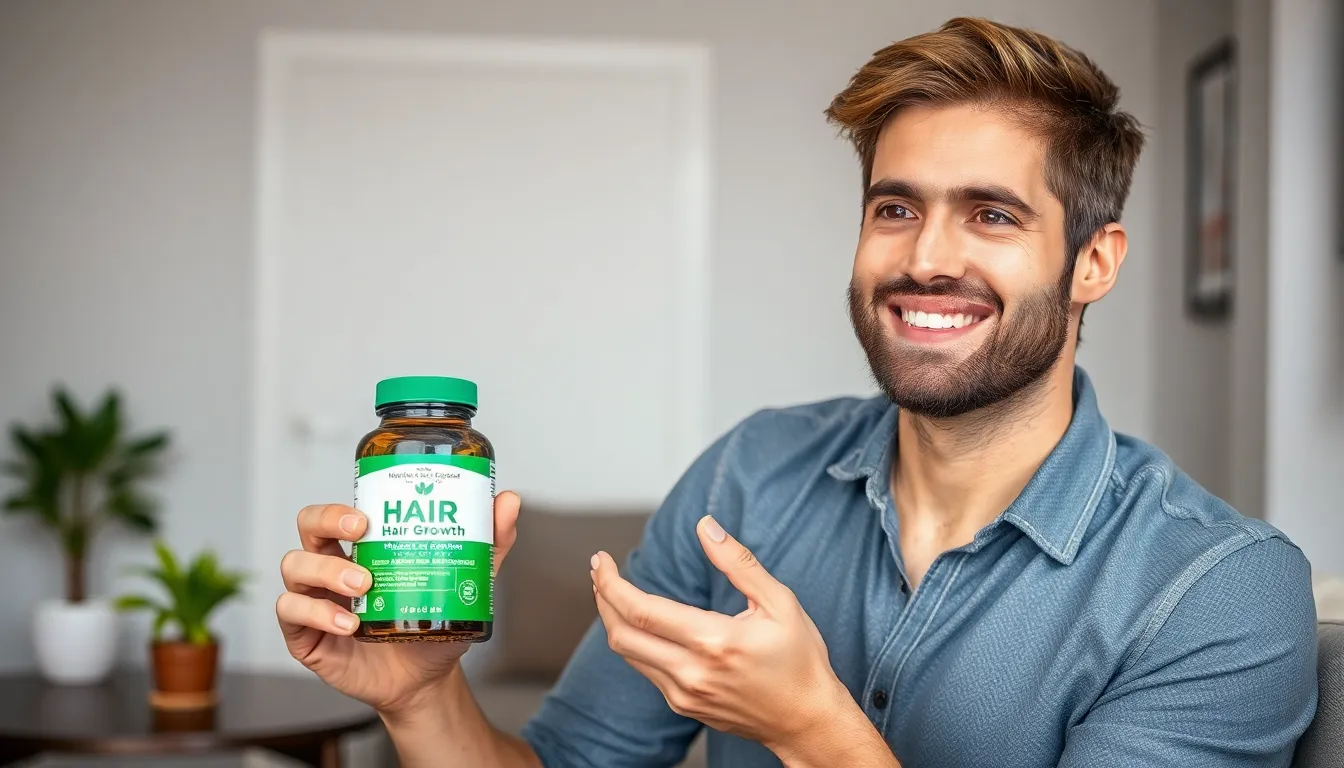
Natural supplements offer another pathway to support your hair growth journey when combined with proper nutrition and care routines. We’ve found that exact vitamins and minerals can address nutritional gaps that might be hindering your hair’s potential.
Research Biotin and Vitamin D Benefits
Biotin serves as a foundational supplement for strengthening hair follicles and improving overall hair health. This B-vitamin plays a crucial role in keratin production, which forms the structural protein of your hair. Studies show that biotin deficiency can lead to hair thinning, making supplementation particularly beneficial for men experiencing gradual hair loss.
Vitamin D maintains its importance for overall wellness, which indirectly supports healthy hair growth. While research doesn’t directly link vitamin D to increased hair production, adequate levels ensure your body functions optimally to deliver nutrients to hair follicles. Men with vitamin D deficiency often experience various health issues that can compound hair loss problems.
Saw palmetto offers natural DHT-balancing properties that many men find helpful. This herb works by potentially blocking the conversion of testosterone to dihydrotestosterone (DHT), a hormone linked to male pattern baldness. Supplements like those from Wellbel Men include saw palmetto as a key ingredient for this reason.
Pumpkin seed oil shows promise in clinical studies for increasing hair count. Research suggests this natural extract may help block 5-alpha reductase, the enzyme responsible for converting testosterone to DHT. Men taking pumpkin seed oil supplements reported noticeable improvements in hair density over several months.
Consult With Healthcare Providers Before Starting
Medical consultation ensures supplement safety and prevents potential interactions with existing medications. Your doctor can evaluate your current health status, review any prescriptions you’re taking, and determine which supplements align with your exact needs. We strongly recommend this step, especially if you have underlying health conditions.
Professional guidance helps identify the root causes of your hair loss before supplementation. Sometimes hair thinning results from hormonal imbalances, nutritional deficiencies, or medical conditions that require targeted treatment. A healthcare provider can run appropriate tests and recommend the most effective approach for your situation.
Dosage recommendations vary significantly based on individual factors like age, diet, and health status. What works for one person might not be appropriate for another, making professional oversight crucial for optimal results. Your provider can suggest proper timing, dosages, and duration for supplement use.
Look for FDA-Approved Supplement Options
Quality manufacturing standards ensure you’re getting supplements that meet safety and purity requirements. While the FDA doesn’t approve dietary supplements like prescription medications, they do regulate manufacturing processes and labeling accuracy. Look for products made in FDA-registered facilities that follow Good Manufacturing Practices (GMP).
Third-party testing provides additional verification of supplement quality and potency. Reputable brands often submit their products for independent testing to confirm ingredient accuracy and absence of contaminants. We recommend choosing supplements that display third-party testing certificates or seals from organizations like NSF International or USP.
Ingredient transparency allows you to make informed decisions about what you’re putting into your body. Quality supplements list all active and inactive ingredients with exact amounts, avoiding proprietary blends that hide actual dosages. Biotin and MSM combinations, zinc and copper formulations, and lycopene-enhanced supplements represent examples of transparent formulations that work together to strengthen hair and provide antioxidant protection against oxidative stress.
Protect Your Hair From Environmental Damage
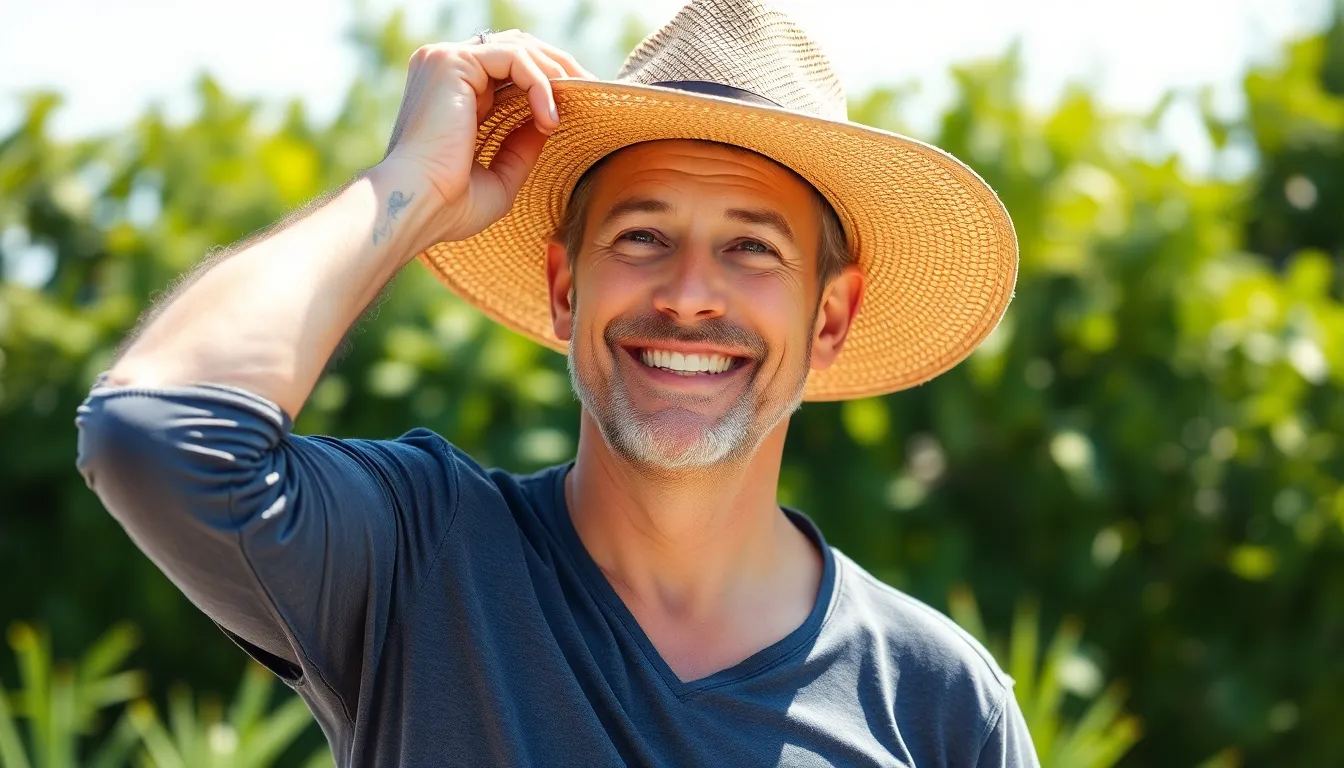
Environmental factors create important barriers to healthy hair growth by exposing our hair to oxidative stress and damaging the hair shaft. Research shows that sun, pollution, and harsh chemicals weaken hair structure and slow the natural growth process.
Wear Hats in Direct Sunlight
Wearing hats provides essential protection against ultraviolet rays that can severely damage our hair. UV exposure breaks down hair proteins and disrupts the natural lipid layer, making strands more susceptible to breakage and brittleness.
Direct sunlight causes multiple forms of hair damage including dryness, color fading, and structural weakness. We recommend choosing wide-brimmed hats or caps with UPF ratings for maximum coverage during outdoor activities.
Physical barriers work more effectively than topical treatments alone when it comes to UV protection. Baseball caps, bucket hats, and sun hats create consistent coverage that shields our entire scalp and hair from harmful rays.
Use Leave-In Conditioners With UV Protection
Leave-in conditioners containing UV filters supplement the protective benefits of hats by creating an additional barrier against environmental damage. These products block damaging rays while maintaining optimal moisture levels in our hair.
UV-protective leave-ins help preserve the hair cuticle from environmental stressors that can slow growth and increase breakage. We should apply these products to damp hair before sun exposure for maximum effectiveness.
Hydrating formulas with SPF ingredients work continuously throughout the day to maintain hair health. Look for products containing zinc oxide, titanium dioxide, or chemical UV filters specifically designed for hair protection.
Avoid Chlorinated Water When Swimming
Chlorinated pool water strips natural oils from our hair, leading to dryness and significantly increased risk of breakage. This chemical exposure can halt healthy growth patterns and damage existing hair structure.
Rinsing hair with clean water before swimming reduces chlorine absorption by saturating strands with fresh water first. We recommend this simple step as an effective preventive measure for regular swimmers.
Swim caps provide comprehensive protection against chlorine damage while allowing us to enjoy water activities safely. Silicone caps create the best seal, while latex options offer adequate protection for occasional swimmers.
Post-swim care becomes crucial for maintaining hair health after chlorine exposure. We should immediately rinse with fresh water and apply a clarifying shampoo followed by deep conditioning treatment to restore moisture balance.
Quit Smoking to Improve Hair Health
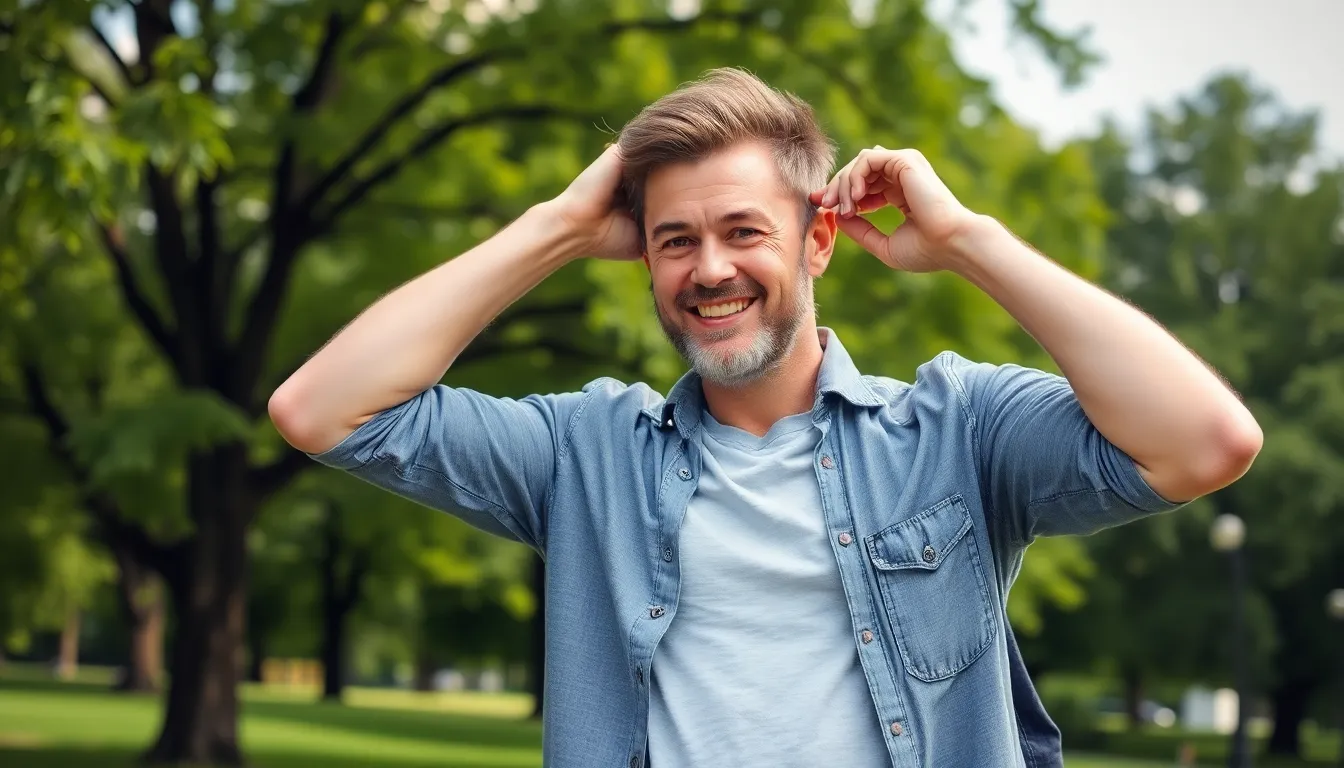
We’ve covered various strategies for promoting hair growth, and now we need to address one of the most damaging habits that can sabotage our efforts: smoking.
Understand How Smoking Reduces Blood Flow to Follicles
Smoking creates a direct barrier to healthy hair growth by restricting blood circulation to our scalp and hair follicles. Nicotine and other harmful chemicals in cigarettes cause our blood vessels to constrict, which limits the oxygen and nutrient supply that’s essential for proper hair follicle function.
This reduced blood flow prevents our hair follicles from receiving the vital nutrients they need to produce strong, healthy hair. Over time, this restriction can contribute to hair thinning and accelerated hair loss, undermining all the other positive steps we’re taking for our hair health.
The chemicals in cigarettes also create oxidative stress throughout our body, including our scalp, which can further damage hair follicles and disrupt the natural hair growth cycle.
Seek Professional Help for Smoking Cessation
Quitting smoking isn’t easy, but professional support significantly increases our chances of success. We should consider working with healthcare providers who can offer comprehensive smoking cessation programs customized to our individual needs.
These professionals can provide various treatment options, including counseling sessions that help us identify triggers and develop coping strategies. Nicotine replacement therapy, such as patches, gum, or lozenges, can help manage withdrawal symptoms during the quitting process.
Prescription medications may also be recommended to reduce cravings and make the transition easier. Working with a healthcare provider ensures we have the proper support system and medical guidance needed to quit smoking successfully and maintain our smoke-free lifestyle.
Notice Hair Improvements After Quitting
After we quit smoking, our hair health begins to improve as normal blood flow returns to our follicles. Many men report noticing gradual improvements in their hair’s thickness and a reduction in hair shedding within several months of quitting.
Enhanced circulation allows vital nutrients to reach our hair follicles more effectively, supporting the natural hair growth cycle. The delivery of oxygen and essential vitamins to our scalp creates an optimal environment for healthy hair production.
These improvements often become more noticeable over time as our body continues to heal from the effects of smoking. Combined with the other hair growth strategies we’ve discussed, quitting smoking can significantly enhance our overall hair health and growth potential.
Consult Medical Professionals for Persistent Issues
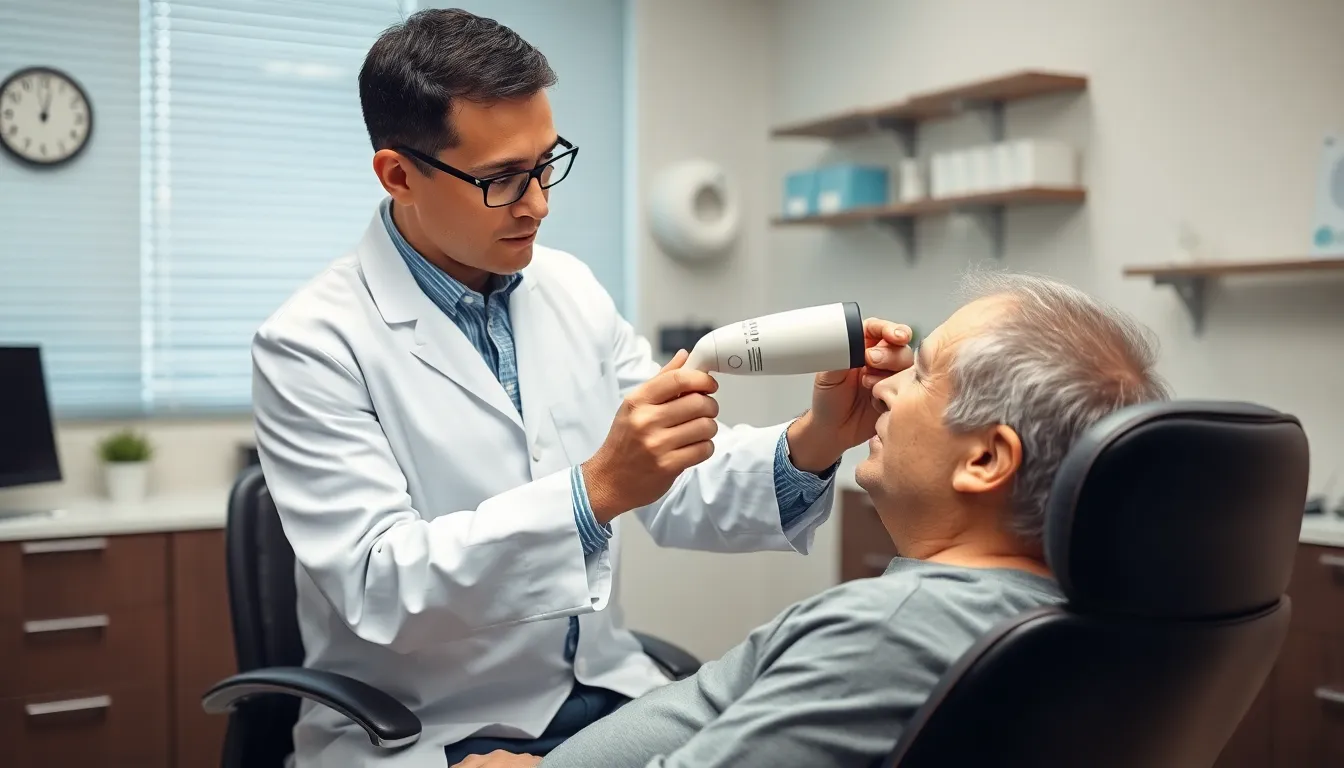
Sometimes our hair loss challenges require expertise beyond home remedies and lifestyle changes. Professional medical guidance becomes essential when we’re dealing with ongoing thinning or pattern baldness.
Schedule Regular Check-Ups With Your Doctor
Family doctors serve as our first line of defense against persistent hair loss issues. Scheduling routine consultations allows us to address hair thinning concerns before they become severe. General practitioners can evaluate our overall health and identify underlying conditions that might contribute to hair loss.
Medical professionals help us understand the root causes of our hair thinning through comprehensive health assessments. They examine our medical history, current medications, and lifestyle factors that could impact hair growth. Our family doctor may recommend blood tests to check for hormonal imbalances, nutritional deficiencies, or thyroid issues.
Regular check-ups create opportunities for early intervention when we notice changes in our hair density or growth patterns. Doctors can track our progress over time and adjust treatment recommendations accordingly. This proactive approach often leads to better outcomes than waiting until hair loss becomes advanced.
Consider Dermatologist Consultation for Hair Loss
Dermatologists specialize in skin and hair disorders, making them ideal partners for addressing complex hair loss cases. We benefit from their expertise when our family doctor refers us to these specialists who focus specifically on scalp and follicle health. These professionals can identify exact types of hair loss and recommend targeted treatments.
Specialized testing becomes available through dermatologist consultations that help pinpoint the exact cause of our hair thinning. They perform scalp biopsies, pull tests, and detailed examinations to determine whether we’re experiencing androgenetic alopecia, alopecia areata, or other conditions. Dermatologists also evaluate our scalp health and check for inflammation or infection.
Professional diagnosis ensures we receive appropriate treatment recommendations based on scientific evidence and clinical experience. These specialists stay current with the latest research and can suggest treatments we might not discover through self-research. Their guidance helps us avoid ineffective products and focus on proven answers.
Explore Professional Treatment Options
Minoxidil products represent one of the most effective professional treatments for male pattern hair loss. Studies show that products containing this ingredient can slow hair loss and stimulate new growth when used consistently. We typically need at least six months of treatment to see noticeable results, making patience crucial for success.
JAK inhibitors offer promising new options for reactivating dormant hair follicles in men with pattern hair loss. Recent research suggests these small molecules can stimulate follicles that have stopped producing hair. Medical professionals can determine if we’re good candidates for these emerging treatments.
Sugar-based therapies show potential for stimulating hair regrowth through naturally occurring compounds like 2-deoxy-D-ribose (2dDR). This treatment promotes new blood vessel formation around hair follicles, offering hope for treating male pattern baldness. Research indicates this approach could benefit men who haven’t responded well to traditional treatments.
| Treatment Option | Timeline for Results | Key Benefits |
|---|---|---|
| Minoxidil | 6+ months | Slows hair loss, stimulates growth |
| JAK Inhibitors | 3-6 months | Reactivates dormant follicles |
| 2dDR Sugar Therapy | 4-8 months | Promotes blood vessel formation |
Professional treatments require medical supervision to ensure safety and effectiveness for our exact situation. Dermatologists monitor our progress and adjust dosages or switch treatments if we experience side effects. This oversight helps us achieve optimal results while minimizing risks associated with hair loss medications.
Conclusion
We’ve covered a comprehensive range of strategies that can make a real difference in your hair growth journey. From optimizing your nutrition and establishing proper care routines to managing stress and protecting against environmental damage these approaches work best when combined rather than used in isolation.
Remember that hair growth is a gradual process that requires patience and consistency. The techniques we’ve discussed aren’t overnight answers but they’re proven methods that address the underlying factors affecting your hair health.
Take action on the tips that resonate most with your lifestyle and current needs. Whether you start with scalp massage dietary improvements or professional consultation the key is beginning somewhere and staying committed to the process.
Your hair health journey is unique to you so don’t hesitate to seek professional guidance when needed and celebrate the small improvements along the way.
Frequently Asked Questions
What foods should I eat to promote hair growth?
Focus on protein-rich foods like eggs, fish, and lean meats since hair is primarily made of protein. Include iron-rich foods such as spinach and beans, zinc sources like nuts and seeds, and omega-3 fatty acids from salmon and walnuts. These nutrients provide the building blocks necessary for healthy hair growth and strengthen existing hair follicles.
How often should I wash my hair to prevent hair loss?
Avoid over-washing, which can strip natural oils and cause dryness. Most men should wash their hair 2-3 times per week, but this varies based on your scalp type. Those with oily scalps may need daily washing with clarifying shampoos, while dry scalp types should use moisturizing formulas less frequently.
Does scalp massage really help with hair growth?
Yes, scalp massage stimulates blood circulation to hair follicles, promoting growth. Use circular motions with your fingertips for 5-10 minutes daily, focusing on thinning areas. Adding essential oils like rosemary or peppermint can enhance benefits. Consistency is key—regular massage over time shows the best results for hair thickness and growth.
How does stress affect hair loss?
High stress disrupts the natural hair growth cycle and can trigger excessive shedding. Stress hormones interfere with nutrient delivery to hair follicles. Managing stress through regular exercise, meditation, deep breathing techniques, and getting 7-8 hours of quality sleep can significantly reduce stress-related hair loss and support healthy growth.
Should I avoid heat styling tools completely?
You don’t need to eliminate them entirely, but limit use to prevent hair damage. When using hair dryers, straighteners, or curling irons, always apply a heat protectant spray first. Air drying is preferable when possible. Choose lower heat settings and avoid daily use to maintain hair strength and prevent follicle damage.
How much water should I drink for healthy hair?
Aim for 8-10 glasses of water daily to maintain optimal scalp hydration and support nutrient delivery to hair follicles. While direct studies linking water intake to hair growth are limited, proper hydration supports overall wellness and helps your body transport essential nutrients to hair roots effectively.
Are hair growth supplements worth trying?
Natural supplements can help address nutritional gaps that hinder hair growth. Biotin, vitamin D, saw palmetto, and pumpkin seed oil show promise for supporting hair health. However, always consult with a healthcare provider before starting supplements to ensure safety and effectiveness. Choose FDA-approved options with third-party testing for quality assurance.
When should I see a doctor about hair loss?
Consult a doctor if you notice persistent or sudden hair loss, despite following healthy hair care practices. Schedule regular check-ups to address thinning concerns and evaluate overall health. A dermatologist can diagnose complex hair loss conditions and recommend professional treatments like Minoxidil or JAK inhibitors when appropriate.
